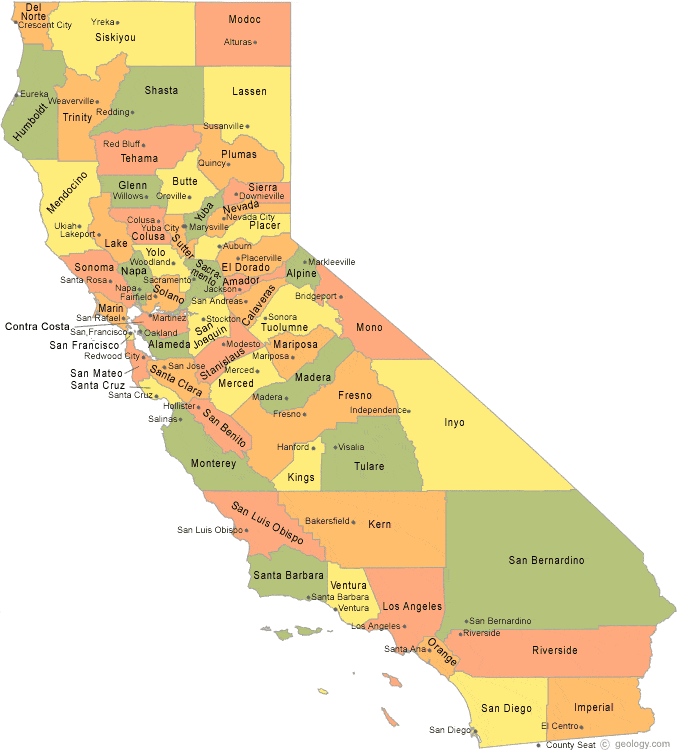California’s 58 Counties: History, Facts, and Travel Tips
California’s 58 Counties: History, Facts, and Travel Tips
Blog Article

Have you ever wondered how many counties California actually has? You’d be surprised how many people ask the same question. Whether it’s for school projects, travel plans, or simple trivia, the magic figure 58 always surfaces, but that single digit barely scratches the surface.
The Golden State’s 58 counties create an incredibly diverse mosaic: fog-kissed seaside towns, pine-covered mountain regions, vast agricultural heartlands, and thriving tech metropolises. None of these counties lacks a unique backstory, moulded by gold-rush dreams, high-tech revolutions, and ever-changing demographics.
In the sections ahead, we’ll unpackhow the state’s county map froze at fifty-eight, what each county actually does for its residents, and the record-holders—from the tiniest to the most populous. Ultimately, you’ll have the numbers—and map your next California adventure with confidence.
Origins of California’s 58 Counties
When California joined the Union in 1850, the map contained barely half the jurisdictions we know now. An unprecedented population boom forced lawmakers to redraw borders. Within twenty years, the count had risen to over five dozen counties, and in 1907 the last adjustments were ratified, locking in the official total of fifty-eight.
Legislative records show that fresh jurisdictions were born because of three major pressures:
- Sheer distance turned routine business into week-long trips.
- Tax disputes between miners and farmers sparked break-ups.
- Cultural rivalries demanded tailored governance.
In less than seventy years, the political map stabilised. Right now, no proposal to add a 59th county has cleared committee, prompting analysts to call the era of county making decisively over.
From Kelp Forests to High Deserts: County Geography
Plot a route from foggy Crescent City to the date groves of Coachella, and you’ll cross a climatic kaleidoscope. Pacific-facing districts enjoy Mediterranean precipitation, while basin counties in the Central Valley battle drought cycles.
- Alpine districts such as Mono, Mariposa, and Calaveras store California’s snowpack.
- Delta counties balance peat islands and orchards.
- Off-shore authorities like Santa Barbara license film crews on beaches.
This breadth clarifies how water rights, zoning, and ag yields diverge so sharply. Climate, after all, shapes crops and careers.
What Counties Actually Do
Within the state’s tiered system, cities tackle local bylaws, but counties are tasked with vital “unseen” duties that hold civilisation together. From birth to death—vital records, coroner reports, property deeds—all reside at the registrar of voters.
County law-enforcement offices patrol unincorporated land, while trial courts hear probate battles. Social-services bureaus coordinate Medi-Cal. Tax-allocation showdowns fill chamber galleries with activists.
Spotlight: Los Angeles County’s Scale
Los Angeles County alone employs 100 000+ workers, highlighting how adaptable county governance proves. Uniformity would never work when budgets span five figures to double-digit billions.
Ultimately, county halls translate state statutes into daily action. Grasping their portfolio empowers voters.
Demographic and Fiscal Highlights
California houses over 39 million residents, but that population is far from evenly spread. Los Angeles County alone accounts for roughly a quarter. At the other extreme, high-elevation Alpine could fit its voters into a high-school gym.
- Top headcount: County of Los Angeles
- Least populous: Alpine
- Biggest footprint: San Bernardino
- Tightest borders: City & County of SF
Money, like people, concentrates and evaporates. Tech-centric jurisdictions report six-figure median incomes, while interior ag counties face commodity price swings. These fiscal contrasts informs legislative redistricting every decade.
Knowing which county tops which listmakes relocation plans simpler: county borders redraw home-buying budgets and business how many counties in california licences.
An Epic 58-County Road Trip
For intrepid travellers, bagging all 58 jurisdictions is the new bucket-list quest. A popular itinerary kicks off in sunny San Diego, heads north along Highway 1, swings through Santa Cruz, then cuts a diagonal across rice-field flats and orchard grids, before ascending into the high Sierra for old stamp mills.
Regional Mini-Loops
- South-land Loop – Mission trail coast; 10 counties in four days.
- Valley Ribbon – Grapes to rice paddies; eight hours of orchards.
- Northern Peaks – crater-rim roads; hidden hot springs.
Cap off the circuit in El Centro, with quadruple-digit odometer gains. At that point, you can brag that you’ve lived the answer to the county-count question—having grabbed selfies at every line marker.
Frequently Asked Questions
Below you’ll find concise answers to the most common county-related queries.
What is the total number of counties in CA?
State records confirm 58 counties—a number that hasn’t changed since 1907. Whether you ask the Secretary of State, the Census Bureau, or a local historian: precisely fifty-eight.
Most populous California county?
Los Angeles County tops the list, housing roughly one in four Californians. Decades of immigration, entertainment dominance, and job growth keep the numbers high.
What is the smallest county in California by population?
The crown for smallest population goes to Alpine County, with fewer than 1 200 inhabitants. Location along rugged mountain corridors limits large-scale development, making it a haven for solitude seekers.
What is California’s biggest county geographically?
The land-area giant is San Bernardino County encompassing deserts, mountains, and metro suburbs alike. You can drive for hours without leaving its borders—crossing ski slopes, dunes, and bedroom communities.
Why does California have exactly 58 counties?
Early statehood growth pressures split larger districts into smaller units, wrapping up after Imperial broke from San Diego in the early 20th century. Every modern effort to create a new county stalls in committee or dies at the ballot box.
Can new counties still be created in California?
On paper, state statutes permit county formation, though the process is arduous. Financial viability studies plus state-level sign-off deter most would-be county creators. Consequently, boundaries have frozen for over a century.
Why are counties important to everyday life?
Behind the scenes, counties keep daily life functioning: foster care, libraries, building permits, and superior courts. Without county infrastructure, everything from jury duty to restaurant inspections would grind to a halt.
Report this page